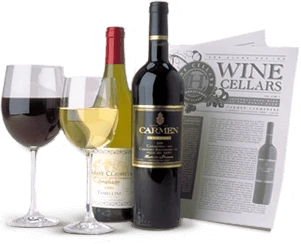We have tasted many California traditional method sparkling wines, but to date none offers more pleasure and value than the Signal Ridge Vineyard SR Brut – a wine that is crafted from the finest Chardonnay (71%) and Pinot Noir (29%) grapes from California’s prized Anderson Valley. The beauty of the SR Brut begins with eye appeal, as this Méthode Traditionnelle sports a pale yellow color and a delightful stream of bubbles that crown the glass like a tiara. Soft, succulent, yet fresh and vivacious, the Signal Ridge SR Brut offers the enticing aromas and savory flavors of mountain apples and freshly baked bread straight from the oven. These fresh, clean scents of autumn along with hints of apple pie and marzipan fill the mouth and delight the palate. Soft and expansive, it glides easily across the tongue before exiting with charm and grace. Provide the Signal Ridge SR Brut a good chill (35°-40° F) before opening, pour it carefully, and then enjoy as the wine’s frothy mousse works its magic.
Roger Scommegna is a renowned California winemaker and hotelier in Boonville, California where he runs the Boonville Hotel and Table 128 restaurant. In 2001, he teamed up with Charles Bieler and the much lauded Joel Gott to make wine. The trio named their wine company “Three Thieves,” a name that is not only memorable but also synonymous with quality and value.
In his search for the ideal locale for growing Pinot Noir, Roger Scommegna discovered Signal Ridge Vineyard on a mountaintop high above Anderson Valley in Mendocino County. At an elevation of 2,742 feet, Signal Ridge Vineyard claims to be the loftiest vineyard in all of Napa, Sonoma, and Mendocino Counties. Here, Signal Ridge’s unique geography just 9 miles from the Pacific Ocean results in extreme variations in diurnal temperature, sometimes accounting for swings of as much 40-50 degrees Fahrenheit in less than a 12 hour period. This challenging terroir provides the ideal environment for growing cool weather grapes such as Pinot Noir and Chardonnay for fashioning Méthode Traditionnelle sparkling wines, which Roger does to great acclaim. His SR Anderson Valley Brut (this month’s feature) is a sparkling wine made using the same Méthode Traditionnelle that is employed in making the finest French Champagnes.
Signal Ridge’s SR Brut provides an ideal way to celebrate an occasion or nothing at all. It makes for a splendid aperitif or a prelude to a sumptuous meal. It pairs easily with all kinds of hors-d’oeuvres, risottos, fish, and light meats. Wild caught cod or salmon cooked with fennel provides an especially tasty accompaniment. Shrimp, scallops, sautéed shellfish, and lightly fried tempura dishes also make excellent pairings with Signal Ridge’s SR Brut. Steamed crab legs, lobster, prawns, and poultry, especially roast turkey with all of the trimmings (think roasted root vegetables and a savory onion and sage stuffing), offer other worthy accompaniments, while a plate of fresh fruit and soft, ripe, creamy cheeses constitute more worthy partners to Roger Scommegna’s delightful Signal Ridge SR Brut. Enjoy!
Méthode Traditionnelle refers to the traditional, painstaking method of producing sparkling wine that developed over centuries in the Champagne region of France. So synonymous today is the name Champagne with sparkling wine that the nomenclature has been applied generically and indiscriminately to any wine that bubbles, much to the regret of the producers in Champagne and contrary to international agreement. Authentic Champagne comes only from the Champagne district of France and meets all the approved legal requirements and standards of production, including absolute adherence to the painstaking Méthode Champenoise. Méthode Champenoise is known outside of Champagne as Méthode Traditionnelle. Méthode Traditionnelle requires that secondary fermentation take place in the bottle for sparkling wines.
The magic of fine sparkling wine made by the Méthode Traditionnelle comes from encapsulating the bubbles in the very bottle in which the wine begins its life. In the old days, long before the advent of technical wine equipment, temperature control, and central heating, the slow fermentation of grapes in the cool autumn air was often interrupted by winter’s chill. With the onset of winter, fermentation would stop completely or at least appear to cease, so the wine was bottled and prepared for distribution. However, the following spring, temperatures would rise again and the fermentation process would begin anew—in the bottle. This delayed completion of fermentation is known as secondary fermentation, and it produces the beautiful bubbles and tiny streams of carbon dioxide that have come to enchant centuries of well-wishers and hedonists. What began as serendipity is now one of the wine world’s highest art forms.
Thanks to centuries of improvements and some of the first true brand name marketing, Champagne and many other traditionally-made sparkling wines, such as the SR Brut, enjoy a special place at celebrations and tables around the world.

Enjoy Limited Production Estate
Bottled Wines
Discover limited production estate bottled wines such as Vergenoegd's internationally
acclaimed 2005 Cabernet Sauvignon, imported exclusively for our members.

